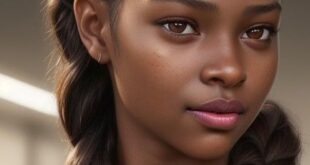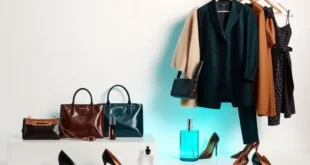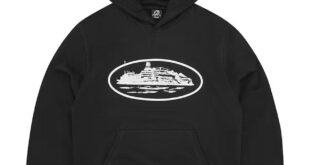Essential Clothing Length and Fit: A Complete Guide
The right clothing length and fit can make all the difference in Essentials Clothing how you feel and present yourself. Whether you’re putting together a casual look or dressing up for a special occasion, understanding how clothes should fit can elevate your style. In this guide, we’ll explore the fundamentals of finding the perfect clothing length and fit for all occasions.
1. Understanding Lengths for Different Garments
The length of clothing items like shirts, pants, skirts, and jackets affects how polished your outfit looks. Here’s a breakdown of essential clothing lengths and tips on how to make them work for your body type:
Shirts and Tops
- Casual T-shirts: Casual tees usually look best when they end around mid-hip. This length complements most body types without overwhelming the figure.
- Dress Shirts: A dress shirt’s length is crucial for a neat look; it should be long enough to stay tucked in. For most, this means reaching the midpoint of the buttocks.
- Crop Tops: Cropped lengths should hit at or slightly above the waistline of your pants. This style pairs well with high-waisted pants or skirts, creating a balanced look.
Pants and Jeans
- Full-Length Pants: Full-length pants should typically skim the top of your shoes without bunching. This length elongates the legs and offers a sleek profile.
- Cropped Pants: Cropped pants, ending around the ankle, can create a modern, versatile look. They work well for both casual and professional settings when paired with the right footwear.
- Shorts: Shorts come in various lengths, but a mid-thigh or above-the-knee length is generally flattering for most body types.
Skirts and Dresses
- Mini Skirts and Dresses: These should ideally end mid-thigh or higher for a flirty look. Be mindful of the occasion to avoid a too-short appearance.
- Knee-Length: Knee-length skirts are timeless and work well for both formal and semi-formal events.
- Maxi Length: Maxi dresses and skirts should hover just above the ground to avoid dragging but still offer a flowy silhouette.
2. Finding the Right Fit for Body Types
The fit of clothing affects not only how comfortable you feel but also how the garment appears on you. Here are tips for finding a fit that flatters different body shapes:
Fit for Hourglass Shapes
- Hourglass figures look great in tailored fits that accentuate the waist.
- Avoid excessively loose clothing as it can hide the natural silhouette of this body type.
Fit for Rectangular Shapes
- Adding shape with fitted tops or belted pieces helps create a balanced look.
- Opt for garments that add curves, like A-line skirts and wrap dresses.
Fit for Pear Shapes
- Emphasize the waist with fitted tops or high-waisted pants, which balance out wider hips.
- Avoid tight-fitting bottoms that draw attention to the lower body, opting instead for relaxed fits.
Fit for Apple Shapes
- Apple shapes benefit from clothes that draw attention away from the midsection, like flowy tops and A-line skirts.
- Structured, fitted pieces that define the shoulders and waist are flattering.
3. Essential Fit Considerations for Tops, Bottoms, and Outerwear
Tops
- Shoulder Fit: Shoulder seams should align with the edges of your shoulders. This alignment ensures that the garment sits correctly and enhances posture.
- Sleeve Length: Sleeves should end just below the wrist bone for long-sleeved shirts. For short sleeves, aim for a mid-bicep length.
- Chest and Waist Fit: Tops should fit snugly around the chest without pulling. If it’s too loose, it can look sloppy, while a too-tight top may restrict movement.
Bottoms
- Waist Fit: Pants should fit comfortably around the waist without needing a belt to stay up.
- Hip and Thigh Fit: For a flattering look, pants should sit comfortably around the hips and thighs without bunching. Slim or relaxed fits can work, depending on your preference.
- Rise: The rise of pants (high, mid, or low) impacts overall comfort and style. High-rise pants elongate the legs, while mid-rise and low-rise options create a more casual look.
Outerwear
- Jacket Length: Jackets should ideally end around the waist for shorter styles. Longer coats can reach mid-thigh or below, depending on the style.
- Sleeve Fit: Sleeves should reach the wrists comfortably and allow for layering without restriction.
- Overall Fit: Jackets should provide room for layering without feeling oversized. A slight taper at the waist offers a structured look.
4. How to Take Accurate Measurements
Accurate measurements are crucial for buying clothes that fit well. Here’s a quick guide to measuring yourself:
1. Chest: Measure around the fullest part of your chest, keeping the tape level. 2. Waist: Wrap the measuring tape around your natural waistline, generally near the belly button. 3. Hips: Measure around the widest part of your hips. 4. Inseam (for pants): Measure from the crotch down to the desired length of the pants.
5. The Importance of Tailoring
Even off-the-rack clothing can look custom-made with a few simple alterations. Tailoring helps you achieve the best possible fit by adjusting clothes to your unique body measurements. Whether it’s shortening sleeves, taking in the waist, or adjusting the hemline, a tailor can transform your garments and improve their longevity.
6. Choosing the Right Fabric for Fit and Comfort
Fabric choice also influences how a garment fits. Certain materials are more forgiving, while others have little give. Here are some common fabrics and their fit characteristics:
- Cotton: Breathable and easy to care for, cotton provides comfort without clinging. Ideal for relaxed fits.
- Linen: A light, breathable fabric that drapes well. It’s perfect for summer wear but wrinkles easily.
- Polyester and Blends: Durable with slight stretch, these fabrics offer a structured fit that maintains shape over time.
- Wool: A thicker fabric that provides warmth. Wool garments often have a more tailored fit, ideal for colder weather.
7. Styling Tips for Different Lengths and Fits
Once you’ve mastered the essentials of length and fit, styling becomes a matter of personal expression. Here are some practical tips:
- Balance Proportions: Pair fitted tops with relaxed bottoms or vice versa to create a balanced silhouette.
- Experiment with Layers: Layering with different lengths and fits can add dimension to your outfit, making it look more intentional.
- Choose Shoes Wisely: The right shoe choice can enhance your look. For cropped pants, ankle boots or heels work well, while maxi dresses pair beautifully with flat sandals or sneakers.
Conclusion
Understanding clothing length and fit is key to developing Essentials Tracksuits a wardrobe that not only looks good but also feels great. By knowing what lengths suit your body and what fits are most flattering, you can confidently create outfits that showcase your style and personality. From casual tops to elegant outerwear, the essentials of length and fit will guide you in making every piece in your wardrobe work for you.
 Our Gateway to Insightful Blogging Exploring Ideas, Sharing Knowledge, Inspiring Minds
Our Gateway to Insightful Blogging Exploring Ideas, Sharing Knowledge, Inspiring Minds



